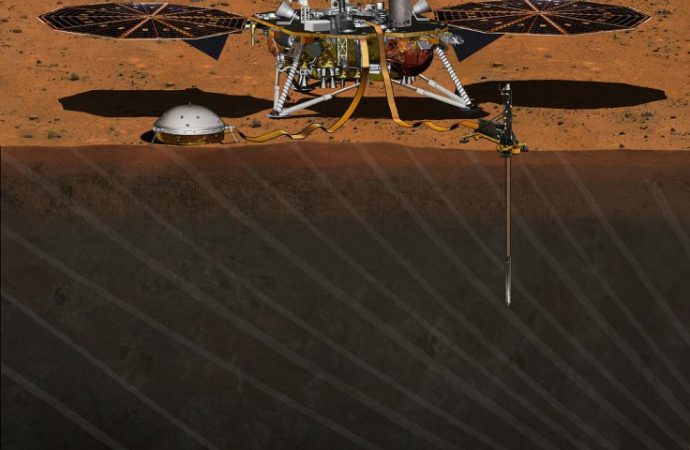2018 is slated to be an exciting year for Nasa and its fans.
Nasa has released its roadmap for 2018 and the list is quite expansive and interesting. Here are a few things to look forward to in the coming year from the National Aeronautics and Space Administration.
Robot to Mars — InSight mission launch
Nasa is working on a mission to send a robot to Mars, called the Interior Exploration, using seismic investigations, geodesy and heat transport. The idea is to study the Red Planet’s deep interior. It will work as a planet explorer that will attempt to answer questions about the formation of the solar system and its inner rocky planets.

All-American launches
The 2018 to-do list includes the Nasa’s plans to keep things American — by launching astronauts from the US, by making use of American companies and the country’s space stations only.

Chasing an asteroid as old as the solar system
Nasa’s Osiris- Rex spacecraft is set to land on asteroid Bennu in 2018. It will be the organisation’s largest ever sample collecting mission from an asteroid. The spacecraft completed its slingshot around the planet in September 2017 and will intercept Bennu about 11,000 miles off Antarctica in October this year.

Study planets around distant stars
The Transiting Exoplanet Survey Satellite (Tess) is a mission that is scheduled to launch in June. It is a survey satellite that will give astronomers a clearer view of distant star systems and planets. The Tess camera will interestingly be slightly out of focus.
Journey to the Sun
The Parker Solar probe is one of the most ambitious missions that Nasa is planning this year. For the first time ever, humans will be sending a probe into the Sun’s atmosphere, about four million miles from its surface. The probe will be about as big as a car and will launch in the summer. Only in December 2017, the Parker probe went through its heat shield testing.
Prepare to send humans to the moon
Nasa, under the Trump administration, has shifted focus from Mars back to the Moon. In October last year, Vice President Mike Pence declared that “we will return Nasa astronauts to the Moon — not only to leave behind footprints and flags, but to build the foundation, we need to send Americans to Mars and beyond.”
The next great observatory
The Hubble Space Telescope has been an invaluable tool to Nasa in exploring the universe and the James Webb space telescope, dubbed the next great observatory, will be put to active duty this year. Webb will be launched on an Ariane 5 rocket from French Guiana in October.

18 years in space aboard the ISS
Nasa will be observing its 18th consecutive year of living, working, and studying both the Earth and the beyond from the only space laboratory currently in operation — the International Space Station.
Deep space habitats
The reality of living in outer space, be it on a new base near the Moon, on the Moon or even Mars, requires habitats and not just vehicles. Nasa will be working closely with private players in the market to build and test deep space habitats that can make deep space travel possible.
Monitoring Earth from space
Climate change is a real and present danger, and Nasa is monitoring weather and climate patterns closely, providing invaluable information to researchers. Evidence of this was seen last year when Nasa monitored the entire hurricane season, providing updates and even using images to chart out spots that needed aid. The space agency will continue to do this even in 2018.
Tracking the planet’s water from space
Nasa’s Gravity Recovery and Climate Experiment (GRACE) is a mission that is focused on monitoring the planet’s water by measuring variations in the Earth’s gravitational field. This mission will get the support of a few more satellites through launches planned out this year.
Lasers to measure the ice on Earth
The Arctic and Antarctic ice shelves are melting rapidly and they are being closely monitored by Nasa, not just from space but also through their Ice Bridge missions. To aid this activity and get more precise measurements of the melting ice, Ice Sat2 is set to be launched this year. It will measure ice using lasers from space.

Reduce sonic booms
Sonic booms are made by objects when they break the sound barrier and can be quite a disturbance, especially over populated areas. Nasa has been working on a way to reduce these sonic booms through several design tests.

Nasa turns 60
Nasa is celebrating its 60th birthday this year. Nasa was established on 28 July 1958 after the National Aeronautics and Space Act was passed.
This list is not complete, there are a few more items on the to-do list released by Nasa. For the full list, watch the video at the top.

Source: International Business Times

































Leave a Comment
You must be logged in to post a comment.